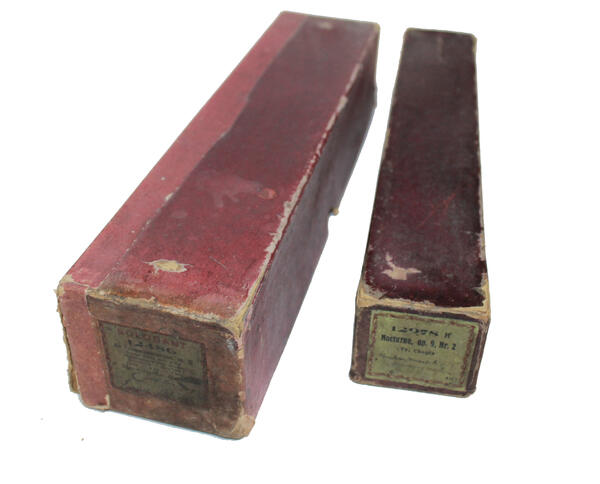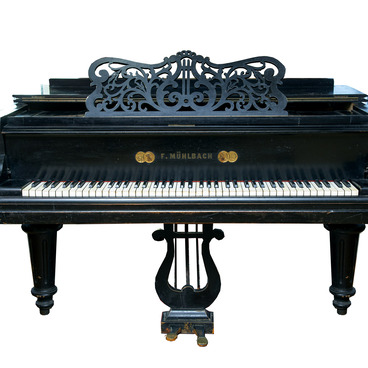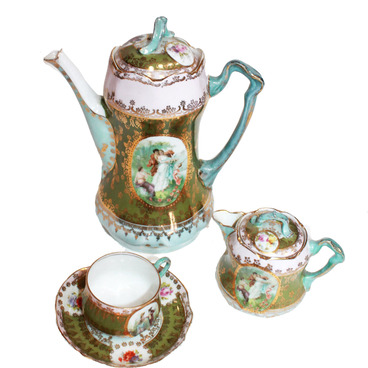The Merchant’s Drawing Room exhibition features a total of 17 perforated rolls for the Hupfeld Phonola player piano.
Perforated piano rolls
Creation period
1913
Place of сreation
Germany
Dimensions
5,3x34,3x5,9 cm
5.3 х 34.3 х 5.9 cm
5.3 х 34.3 х 5.9 cm
Technique
Industrial production
Collection
Exhibition
2
Open in app#1
Perforated Piano Rolls
#3
#4
A piano roll is a paper scroll that is wrapped around a wooden spindle. Such rolls are fitted with holes that allow them to be secured inside a pianola’s movement. The punched paper is marked with green stickers containing the manufacturer’s imprint. Additionally, such rolls could be decorated with portraits of composers whose music was featured on them.
#5
The device that reads perforated paper rolls is found in the center of the center of the piano body. It is fitted with an electric motor that drives a roll, producing music. The air passing through the holes inflates the instrument’s numerous striking pneumatics, throwing its hammers towards the keys. Thus, the device is able to produce music from the score contained on a punched roll.
#6
Piano rolls were stored in cardboard boxes of the same dimensions. The packaging always featured German inscriptions with information about the composer and the title of the piece. You can find out what music could be played by the pianola from our collection just by taking a look at these boxes. Mostly, these include classical music by Franz Peter Schubert, Frederic Chopin, Ludwig van Beethoven, and Franz Liszt.
#7
The German Ibach factory was founded by Johann Adolf Ibach in the city of Barmen. His company specialized in the production of pianos and organs. In those years, pianos were becoming increasingly widespread in drawing rooms, thus replacing the harpsichord, a keyboard instrument that produces sound by plucking the strings. Between 1804 and 1863, the Ibach company was the leading piano manufacturer. The factory introduced a new design of the string-plate, a component that transmits vibrations from the strings into the air, making the sound much louder than if it was produced by the string alone. These new pianos were suitable for concert halls, rather than just playing at home.
#8
In 1869, the factory was inherited by Johann Adolf Ibach’s grandson, Rudolf. He renamed the company to Rud. Ibach Sohn. Seven generations of the Ibach family have been engaged in the production of musical instruments, and their pianos are still been manufactured to this day.
#9
Tomsk History Museum
read morehide
00:00
00:00
1x
Perforated piano rolls
Creation period
1913
Place of сreation
Germany
Dimensions
5,3x34,3x5,9 cm
5.3 х 34.3 х 5.9 cm
5.3 х 34.3 х 5.9 cm
Technique
Industrial production
Collection
Exhibition
2
Open in app
Share



